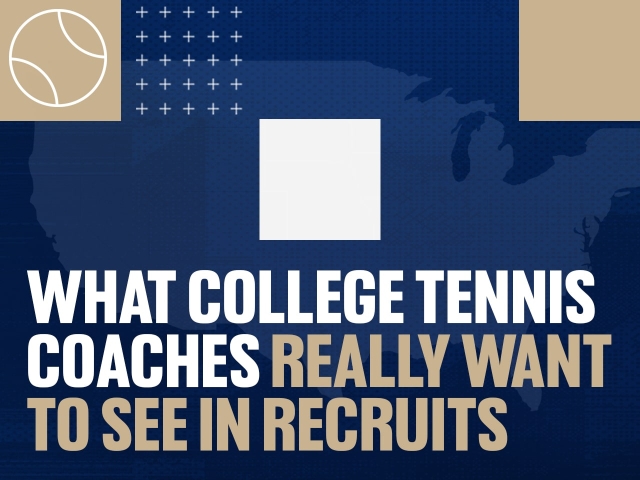Soccer scholarships are available for men’s soccer at the NCAA Division I and Division II levels, as well as at NAIA institutions and Junior colleges. Getting a men’s soccer scholarship is an incredible opportunity for a student-athlete to finance their education while continuing to compete at an elite level. Scholarships are given to athletes who have demonstrated that they have the potential to compete at the highest level. They can cover part—or all—of a student-athlete’s tuition.
Most scholarships are one-year agreements that must be renewed each year. For most NCAA schools, a scholarship offer does not become official until a student-athlete signs the National Letter of Intent (NLI). Of course, student-athletes must first go through the recruiting process in order to secure a roster spot and get an athletic scholarship.
If you want a soccer scholarship in America, it is up to you to take the initiative. Even if you are soccer superstar, you can’t just sit back and expect American college coaches to find you and offer you a full scholarship.
Here are some of the ways you can go about getting a soccer scholarship in the USA:
- Attend a Soccer Scholarship Trial - get an idea of your playing level, eligibility for playing at an American college, and the likelihood of you being successful. Trials are held across the United Kingdom and are run by various organisations. Players of all levels are able to attend and there will be presentations on 'Studying in the USA' available to participating players, parents and guardians. You can learn more about upcoming trials in your area here.
- Contact Coaches Directly - this is completely free but requires your time, patience, and perseverance. You are required to research the various colleges, degrees and soccer programs in the USA that you have an interest in, then identify who the college coach is and his or her email address. Then, provide them with a Sporting & Academic CV, your highlight footage, exam results, and note describing yourself and why you have an interest in attending their university.
Although free, the process is not easy as there are hundreds of thousands of soccer prospects contacting coaches each year, in addition to a number of legislative and administrative hurdles to get over. However, with plenty of patience and a bit of luck, it is definitely possible to secure a soccer scholarship without the help of an expert or service provider. - Use a Sports Scholarship Agency - If you are really serious about getting a soccer scholarship in the USA, then this is the best way to go. Sport scholarship agencies evaluate players. If they believe the player has a good chance of getting a scholarship at an American college or university, they will offer their services (for a fee). They will then get to work on creating a professional highlight video and also help you with your academic profile, SAT test prep, & CV.
Sports Scholarship Agencies are the best way to get a soccer scholarship in the USA because college coaches rely on these third-party evaluations to help weed out unqualified players and find the best talent. A good soccer recruiting agency will not only understand the complex recruitment and scholarship application process, but know the details of the many soccer programs in the USA and which ones are right for you. They can also help with SAT prep, visas, and other aspects of getting a soccer scholarship in America. And, when you do get a soccer scholarship offer, the best scholarship agencies will negotiate provide pastoral support during your four years in America.
NUMBER OF MEN’S SOCCER SCHOLARSHIPS BY DIVISION
In 2019, approximately 1,410 colleges sponsored men’s soccer teams. Here’s how the numbers shake out for the major division levels:
WHAT IS A SOCCER SCHOLARSHIP WORTH?
Many families ask how much the average scholarship is for college men’s soccer. However, that’s pretty difficult to pinpoint. Men’s soccer is an equivalency sport, meaning that coaches are not required to give out full scholarships to their athletes and can instead break them up however they want. So, for a D1 team with 29 roster spots, a coach could give out nine full-ride scholarships and one scholarship that covers 90% of the cost of tuition. Or, the coach can break up the 9.9 scholarships evenly among the 29 athletes.
Additionally, the cost of tuition at each college and university varies. An in-state student at a public university could pay close to $10,000 a year, while an out-of-state student at a private university could pay $60,000 a year. Trying to find an average scholarship amount doesn’t account for those differences in tuition. Furthermore, not all athletes receive scholarships all four years of their college men’s soccer career. Instead of trying to determine what the average scholarship amount is, we recommend families first figure out how much they are willing to pay for four years of college. Then, while going through the recruiting process, student-athletes can compare offers based on their family’s expected contribution—the amount they will pay out of pocket after factoring in all financial aid.
WHAT ARE MY CHANCES OF GETTING A SOCCER SCHOLARSHIP?
Only the top soccer players make it to the college level. About 7.9% of U.S. high school men’s soccer players ended up competing in college across the Division 1, Division 2, Division 3, NAIA and junior college levels. Only about 1.1% of high school men’s soccer players went on to compete at the NCAA Division 1 level.
During the 2016–2017 school year, there were about 450,234 US high school men’s soccer players and about 39,888 college men’s soccer players across all divisions. Of these college athletes, a total of 12,531 soccer players were on D1 and D2 rosters. About 2,664 of them were international athletes, accounting for 21.3% of men’s college soccer roster spots at the D1 and D2 level.
COLLEGES THAT OFFER SOCCER SCHOLARSHIPS
Colleges at the NCAA D1, NCAA D2, NAIA and Junior College levels can all offer scholarships. How many scholarships are available at any given school depends on how many scholarships the coach has committed, whether they are a fully funded program, how the program likes to use their scholarship money and several other factors. Read below to learn more about the opportunities at each division level.
NCAA DIVISION I MEN’S SOCCER SCHOLARSHIPS
Athletic scholarships for D1 men’s soccer are the most difficult to obtain, as the level of play and academics is very high. D1 men’s soccer programs can give out a maximum of 9.9 scholarships a year and these can be a mix of full-ride scholarships and partial scholarships. Bear in mind that 9.9 represents the maximum number of scholarships, but some D1 men’s soccer programs might have fewer scholarships available due to budget limits. Only about 1.1% of US high school men’s soccer players go on to compete at the NCAA Division 1 level.
NCAA DIVISION II MEN’S SOCCER SCHOLARSHIPS
D2 schools can and do offer full-ride scholarships. However, because men’s soccer is deemed an equivalency sport by the NCAA, schools are not required to give out full rides. With a max of nine scholarships per team, D2 schools can choose to offer nine full-ride scholarships or split up the scholarships among the roster, which is an average of 31 players. It’s up to the coach to determine how much money they want to give to each athlete on the team.
NCAA DIVISION III MEN’S SOCCER SCHOLARSHIPS
While D3 schools don’t offer athletic scholarships, most D3 athletes do receive other forms of financial aid. Student-athletes interested in competing at a D3 school shouldn’t let the lack of athletic scholarships deter them. Those who have good grades and test scores have a good chance at qualifying for an academic scholarship. Student-athletes who have been involved in extracurricular activities and their community might be able to find a merit-based scholarship. Families can also take advantage of need-based financial aid, which is awarded based on factors like household income.
The bottom line is that athletic scholarships aren’t the only way to pay for college. There are many other forms of scholarship out there, and if a D3 program wants someone on their team, they can be extremely helpful in finding scholarship money from other sources.
NAIA MEN’S SOCCER SCHOLARSHIPS
NAIA schools offer a similar level of competition to D2 schools, and they can offer a maximum of 12 scholarships. NAIA schools can choose to offer 12 full-ride scholarships or split up the scholarships among the athletes on their roster, which is an average of 30 players. It’s up to the coach to determine how much money they want to give to each athlete on the team. However, NAIA schools have fewer recruiting rules than the NCAA, and NAIA coaches can contact student-athletes anytime during high school. This can make it a little easier to snag a scholarship for some student-athletes.
JUNIOR COLLEGE MEN’S SOCCER SCHOLARSHIPS
With an average roster size of 19 players and a maximum of 18 scholarships allocated per team, junior colleges offer a very good chance of securing a full-ride scholarship. These two-year colleges can be a stepping stone for student-athletes who are looking to transfer between schools or move up into a higher division, all while saving money on tuition and related costs.




